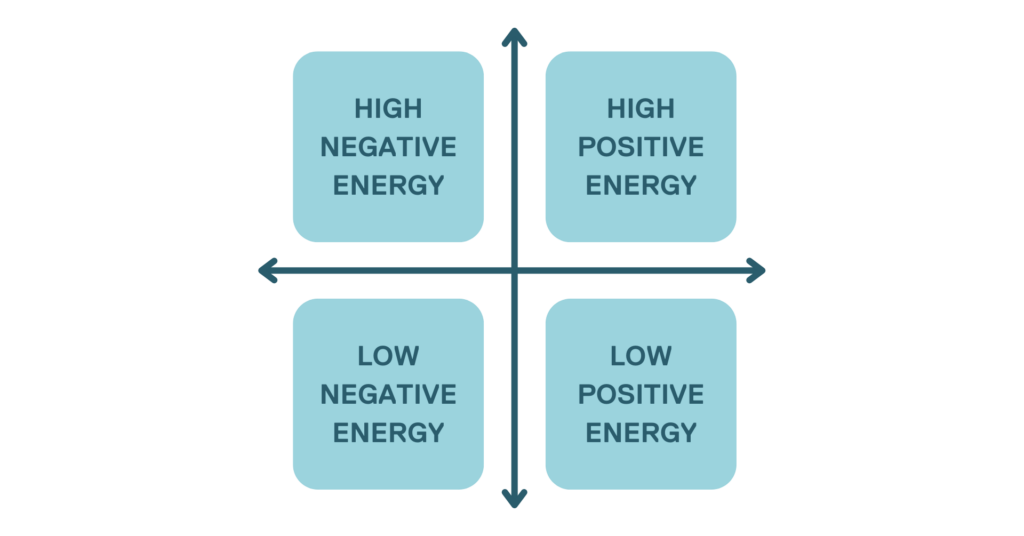Employee Engagement: How to get team players
The issue
An employee group is like a sports team. The best teams are not those with only star players, but rather those in which the people involved are committed to the team’s goals. Having talent is one thing but using it to its full potential is another.
Unfortunately, employee engagement is far from a given for most organizations. According to a 2019 Gallup survey, it was found that more than 85% of employed individuals worldwide are not engaged or are highly disengaged (Gallup, 2019). Listed below are some of the impacts of these disengaged individuals on their organizations:
- Reduced employee well-being;
- Reduced employee retention;
- Higher levels of absenteeism;
- Reduced quality of customer service;
- Etc.
For technocrats who want a quantitative indicator, the lack of engagement is estimated to cause an annual loss of $350-450 billion (US) to U.S. businesses (Alvino, 2014). If engagement was once a complex issue, the forced arrival of remote work in our practices adds a layer to that complexity.
The secret recipe for employee engagement
If there were a secret formula to ensure employee engagement, I guarantee you that it would no longer be a secret (and no, a manager giving away a box of Timbits occasionally as an incentive to their team isn’t the magic bullet). The real secret is that best practices leading to engagement can vary from organization to organization. What works for one work unit may not work for another, and that’s perfectly normal. It is therefore important to know your team well when implementing engagement practices (dynamics, interpersonal relationships, motivations, objectives, etc.).
While some advocate the benefits of monetary rewards, others believe they are inappropriate in the workplace. Rewards are effective, but only at specific times. If monetary rewards are promised quarterly, they become inveterate in the minds of employees and the goal of improving engagement is distorted. In a scenario where monetary rewards are randomized or offered extemporaneously, they can yield greater engagement. If you want to retain and engage your team for the long run, you will need a much more sophisticated strategy.
There are two categories of motivation for an individual: intrinsic and extrinsic. The first category refers to the satisfaction of employees in the performance of their work and the resulting satisfaction (Roussel, 1996). This motivation is innate and stable in the individual. The second category is variable and conditioned by the results. According to research by the Institute of NeuroCognitivism (INC), intrinsic motivation is very solid and durable, whereas extrinsic motivation is much more fragile and ephemeral.
It is also important to distinguish between satisfaction and commitment. A satisfied employee is not necessarily committed, and the reverse is equally valid. Here are some characteristics of these two variants:

There is a strong link between the two categories of motivation. If intrinsic motivation is lacking, extrinsic motivation may not be effective and vice versa. However, the organization can play an important role in extrinsic motivation, which can naturally influence intrinsic motivation positively or negatively. Here are some aspects that can help foster positive employee engagement:
1. Maintaining a healthy and stimulating environment.
An engaging work environment must provide safety for the employee (both physical and psychological) as well as promote positive energy. When it comes to a physically safe environment, you already know its importance in the workplace. However, psychological safety plays an important role and entails procedures that could be trickier to ensure. An employee in a safe environment will face challenges by accepting mistakes without feeling like they are inferior, incompetent, cumbersome, etc. A quality manager must therefore promote to employees that they are in a safe environment by encouraging and defending them in situations of failure. Negative comments about other employees are a major deterrent to engagement and reinforce self-involvement.
In terms of promoting positive energy, here is a very relevant matrix from Peters’ 2019 publication:

Most of the time, we would like our employees to be in the upper right quadrant: High positive energy (constant effort, perseverance, creativity, willingness to collaborate, desire to deliver quality, etc.).
However, it is not realistic to want employees to be in this quadrant all the time. To be able to perform for a long time in this quadrant, it is necessary to have moments where the employee’s energy is waning. We can therefore find our employees in the lower right quadrant: Low positive energy (calm environment, peace is emphasized, relationships are good, etc.) Ideally, a manager tries to keep their employees on the right side of the matrix.
High negative energy is characterized by irritable tensions and behaviours, regular conflicts, unhealthy competitions, etc. Finally, the low negative energy quadrant refers to skeptical employees, lack of leadership, lack of trust, feeling abandoned, etc.
The environment is an important component of workplace engagement. The company and its managers must therefore put in place the components to promote the safety and positive energy of its employees.
2. Having clear expectations and providing the necessary support.
Employees who do not receive clear direction or requests may have more concerns about making decisions. The potential for innovation decreases and the risk of being demoralized increases. A person requesting another employee (whether a colleague or not) should always make their expectations clear and ensure that the person understands what they are asking for. The SMART model (Specific, Measurable, Acceptable, Realistic and Time-bound) comes to mind.
Even if the requests are very clear, they must be achievable by the assigned person. It is therefore important to check if 1) the person has undergone all necessary training to perform the task and 2) the technologies and systems in place allow the request to be carried out. If one of these aspects is not present, the employee may quickly become demoralized while trying to do the job. Consult with the work team regularly to see if training is needed if processes can be improved (optimized), or if the team has any other recommendations that can foster their commitment to the team’s goals.
We also need to be careful about the number of requests we make. Even if our requests are SMART, bombarding an employee with too many requests will not encourage commitment. It is important to know the capacity of the team members and make sure to respect it.
3. Taking time for employees and accompanying them in their development.
Again, according to the Gallup study, the manager’s role influences employee engagement by about 70%. This percentage may seem alarming, but I like to think of it as motivating. Therefore, a manager who listens and cares about their employees can have a significant impact on their engagement. Daily discussions, whether it’s short calls to make sure the employee’s load is appropriate or simply to chat, can foster engagement. The key to making these meetings effective is repetition. These calls have a greater impact if they are daily than if they are every week. Not all employees need to talk regularly, so it is necessary to know their preferences.
Beyond the daily meetings, it is important to discuss with employees their career paths. I am not referring to performance evaluation meetings, but to discussing with the employee the training/coaching opportunities that would be beneficial to the employee. Based on their future goals with the organization, one can coach the employee towards those goals. The important thing, in the long run, is not to receive a paycheck every two weeks, but to be fulfilled in what you do every day. As a manager, it is an important responsibility to take the pulse of your team regularly.
4. Commitment from a distance!
It’s hard to talk about best practices without talking about the trend of the moment: remote working. We’ve seen an accelerated uptake of such a work dynamic and its popularity seems to indicate that it is here to stay. This technology allows employees to work completely from home because of the geographic distance between them and the workplace. These employees, equally talented and important to the organization, face the unique challenge of social isolation. Whether it’s meeting colleagues in the office or missing physical events, a sense of separation can be created and greatly influence the level of engagement of these employees. To ensure employees’ remote work isn’t getting to them, you can apply the following practices:
- Pay attention to the tasks/projects that seem of interest to these employees the most and those that seem to challenge them less. If possible, adjust the work structure to emphasize the interests and strengths of the employees.
- Demonstrate the importance of the work done to the organization’s objectives. When positive results are achieved, do not hesitate to publicly congratulate the employees and especially identify how the service rendered creates value for the organization.
Encourage digital socializing/activities to foster chemistry within the team. This can create working relationships that can enhance the work experience for remote employees. Several activities can help build chemistry such as an online Jeopardy, a personalized quiz on Kahoot (kahoot.com), a housing rally, etc. Be creative while being reasonable; one activity per week can become overwhelming for many employees and even counterproductive.
Conclusion
Ultimately, fostering employee engagement is a challenge that no one can escape. As statistics show, the vast majority of employees lack engagement, which hurts the organization. In my opinion, commitment is based on regularity. Small, consistent practices/actions will eventually guarantee the success you desire. Whether it is interventions, attentions, activities or any other gesture, it is important to be consistent. There are many tools to implement commitment, finding, adapting, and utilizing them is the hard part. Finally, between you and me, an occasional box from Timmies isn’t the worst idea either…
References
Alvino, L. (2014, 29 septembre). Engage your employees or lose billions. Forbes Magazine. http://www.forbes.com/sites/womensmedia/2014/09/29/engage-your-employees-or-lose-billions/
Boulay, A., Robert, V. & Vandenberghe, C. (2021). Engagement envers les buts d’équipe et l’organisation : test d’un modèle intégrateur. Le travail humain, 84, 349-381. https://doi-org.proxybiblio.uqo.ca/10.3917/th.844.0349
Bourdon, I., & Bourdil, M. (2007). Récompenses et gestion des connaissances, des liens complexes ! La Revue Des Sciences De Gestion : Direction Et Gestion, 42(226), 165-171.
Gallup (2019). Employee engagement: Maximizing employee potential.https://www.gallup.com/workplace/267512/development-culture-engagement-paper-2019.aspx?thank-you-report-form=1
Mahamadou, Z., Fall, A. & Giraud, L. (2020). The impact of organizational culture on work performance: the mediating role of intrinsic motivation. Revue de gestion des ressources humaines, 118, 38-54.
Peters, J. (2019). Employee engagement : creating high positive energy at work (Ser. Talent management ser, v. 5). Knowledge Resources. Retrieved 2022
ROUSSEL, P. (1996). Rémunération, Motivation et Satisfaction au Travail, Economica, Paris.

